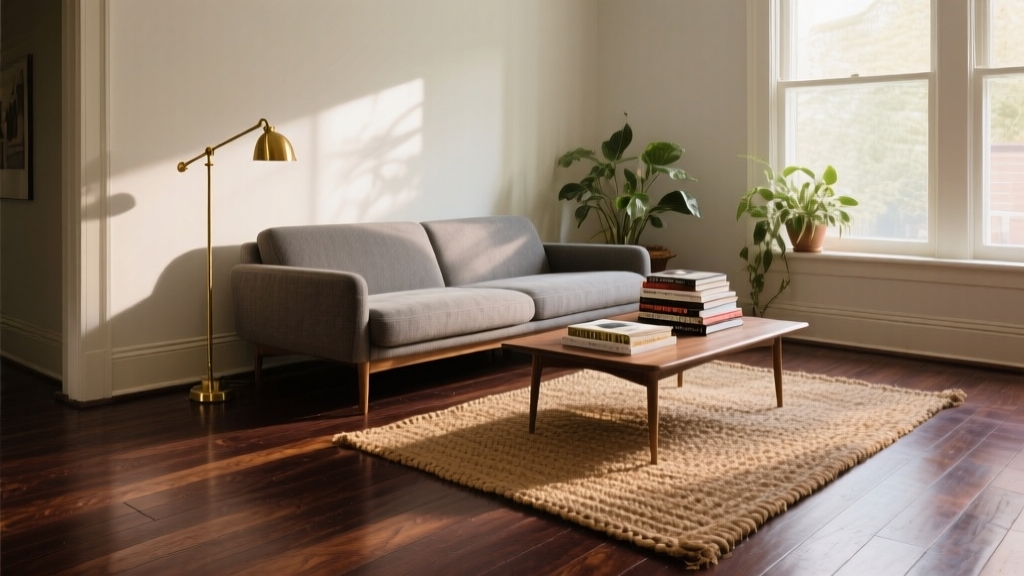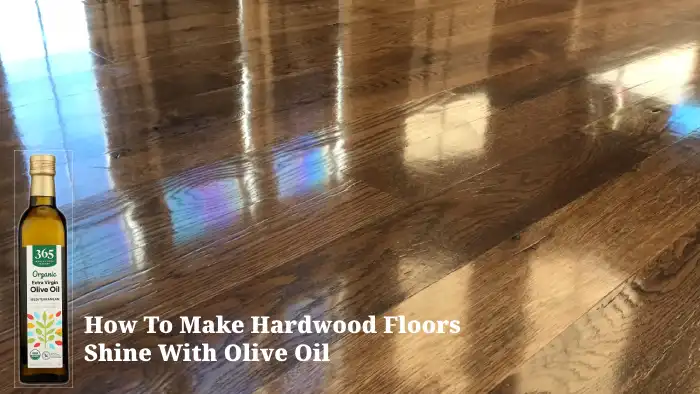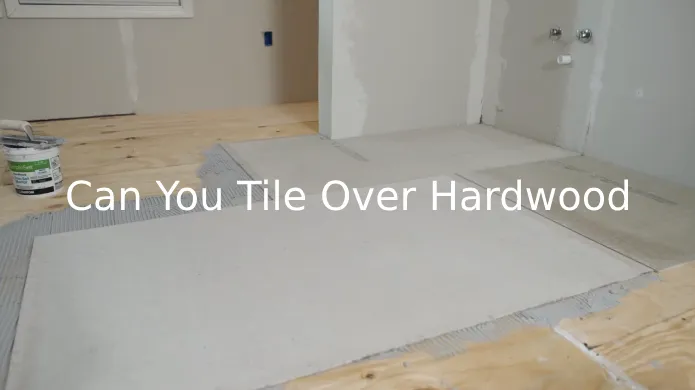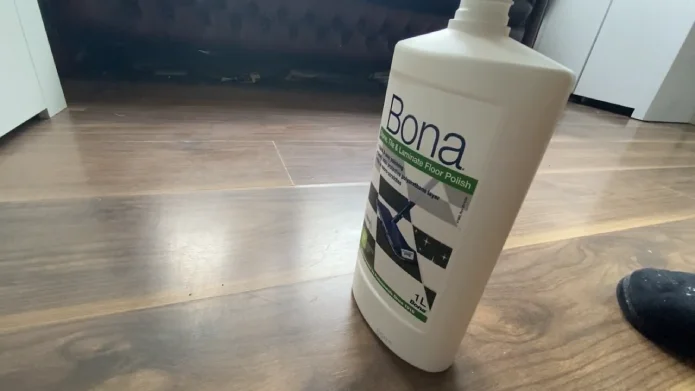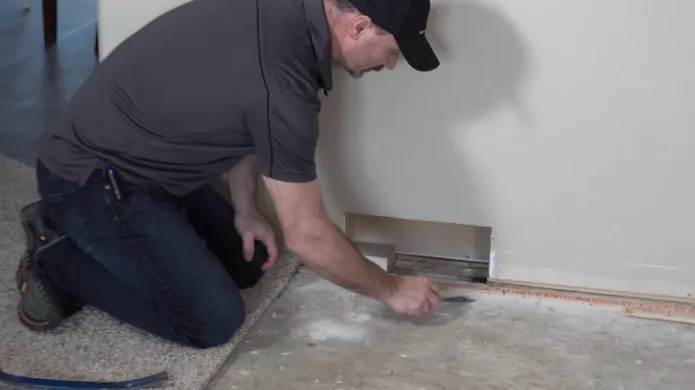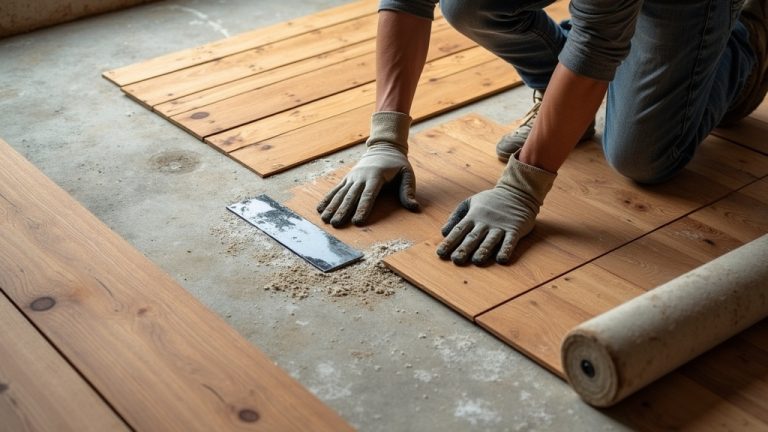Are Dark Hardwood Floors Out of Style: Matte Advantage
You’re not behind the times if you choose dark hardwood floors—they’re very much in style for 2025. Dark hardwoods like deep espresso and black hues bring sophistication, warmth, and a dramatic touch to interiors. Matte or low-gloss finishes help hide dust and scratches well.
They complement a range of design styles, balancing boldness with elegance. To explore how dark floors fit perfectly with your home’s lighting, furniture, and décor, keep exploring these insights.
Key Takeaways
- Dark hardwood floors are currently experiencing a bold resurgence and remain highly popular in 2025 interior design trends.
- Matte and low-gloss dark finishes are favored for their modern, natural look and ability to hide dust and scratches.
- Dark floors add sophistication, warmth, and depth, making them ideal for cozy, dramatic, and luxurious spaces.
- They pair well with light walls and furniture, creating balanced, elegant interiors without feeling heavy or outdated.
- Proper maintenance and wide plank styles keep dark hardwoods practical and stylish, aligning with eco-friendly design preferences.
Current Popularity of Dark Hardwood Floors in 2025
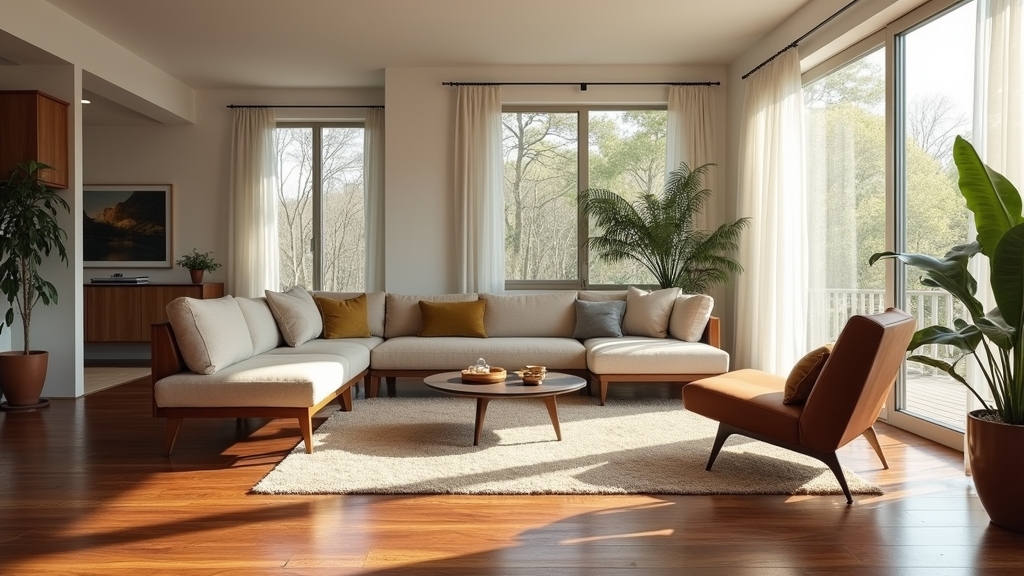
Although light oak floors once dominated interior design trends, dark hardwood floors are making a bold comeback in 2025, offering a sophisticated alternative that enhances both modern and traditional spaces. You’ll find rich hues like ink black, deep coffee, and grayish walnut adding understated warmth and versatility.
These floors create cozy yet dramatic environments perfect for bedrooms, living rooms, dining areas, and high-traffic zones. Designers use dark hardwood as a stylish backdrop that highlights furniture and décor, elevating the entire room’s aesthetic.
Dark wood flooring is also highly durable, making it ideal for spaces with frequent use. Additionally, regular maintenance including preventative measures can help preserve the floor’s appearance and longevity.
Beyond beauty, dark hardwood conceals scratches and dust better, reducing your cleaning frequency. Matte or low-gloss finishes prevail, aligning with current trends and lending a natural, refined look.
Comparing Dark Hardwood Floors With Light Hardwood Trends
You’ll notice that light hardwood floors bring a bright, airy feel that suits modern, open interiors. For instance, the Ladson Montevideo Oak with its blonde tones and subtle grain perfectly complements modern, airy interiors.
Meanwhile, dark hardwood adds bold contrast, making it ideal for classic or luxurious spaces. Each creates a distinct ambiance, so your choice depends on whether you want a fresh, versatile look or a rich, dramatic tone.
Remarkably, both light and dark floors continue to coexist, reflecting diverse design preferences and architectural styles. Additionally, choosing the right floor color involves considering room size and lighting to maintain balance and harmony in your space.
Contrast in Interior Design
When choosing between dark and light hardwood floors, understanding their contrasting effects on interior design is key to achieving your desired ambiance.
Dark hardwoods like deep espresso and rich walnut bring depth and sophistication, creating a dramatic, cozy atmosphere, especially when paired with light walls and furniture for balance. Their warm undertones add a classic feel, while cooler hues lean contemporary.
Dark hardwood also enhances architectural features, providing a dramatic presence that elevates the overall design. Light hardwoods, such as oak and maple, emphasize openness and freshness, aligning with Scandinavian-inspired, airy interiors.
They highlight natural light and spaciousness, favoring soft beiges and honey tones over stark minimalism. While dark floors accentuate grain and texture with matte finishes, light floors complement minimalist layouts.
Recognizing these contrasts helps you select flooring that enhances your space’s style and mood with precision and lasting appeal. When integrating different floor types, using transition strips can help bridge contrasts while maintaining a smooth and cohesive look.
Bright vs Bold Ambiance
If you want your space to feel bright and expansive, light hardwood floors offer a fresh, airy ambiance that enhances natural light and visually enlarges rooms. They suit modern, casual, and Scandinavian-inspired interiors, promoting openness and minimalism.
Additionally, light woods like oak, maple, or birch embody a minimalist elegance that serves as a versatile backdrop for diverse décor styles. In contrast, dark hardwood floors create a bold, intimate, and luxurious atmosphere, ideal for formal or traditional spaces.
Dark finishes add warmth and richness but require lighter walls and furnishings to avoid heaviness. However, avoid waxing dark hardwood floors to maintain their finish and longevity. Consider these points when choosing your floor’s ambiance:
- Light floors reflect natural light, making rooms appear larger and more open.
- Dark floors hide wear better, providing longevity in high-traffic areas.
- The ambiance you create influences your room’s style—from bright and casual to bold and sophisticated.
Coexisting Flooring Preferences
Understanding the distinct vibes created by bright versus bold hardwood floors sets the stage for comparing their current market presence and design trends.
Light hardwood floors, like oaks and maples, dominate with their airy, Scandinavian-inspired appeal, enhancing openness and freshness. To maintain their pristine look, many homeowners implement regular refinishing and maintenance routines.
In contrast, dark hardwoods such as walnut and mahogany offer rich warmth and sophistication, perfect for creating intimate, luxurious spaces. You’ll find dark floors excel paired with light walls, adding contrast without heaviness.
Additionally, many homeowners now prioritize sustainably sourced wood to combine environmental responsibility with timeless beauty. Wide plank formats and matte finishes keep their look modern and refined. Both styles emphasize natural wood’s character but cater to divergent aesthetics brightness versus drama.
Today, many designers blend these preferences, using dark floors to complement light cabinetry or walls, achieving balanced interiors that feel personalized and visually engaging.
Trending Design Patterns Featuring Dark Hardwood Flooring
Although dark hardwood floors have long been admired for their rich tones and dramatic presence, 2025 sees them embraced in innovative design patterns that elevate both aesthetics and functionality.
You’ll find dark flooring used to define open spaces, creating intimate zones through selective placement combined with area rugs. Proper surface preparation ensures the paint or finish adheres well when updating or maintaining these floors.
Geometric and checkerboard tile patterns paired with dark wood add warmth and visual interest, while layering metallic or glass accents enhances the luxurious feel. These approaches balance depth with lightness, preventing heaviness in your interiors.
Use wide planks with textured finishes for a spacious, minimalist look. Combine dark floors with light walls and furniture to maintain brightness, as these deep hues lend an elegant, high-end look. Integrate mixed flooring patterns for dynamic contrast and style.
Practical Benefits and Maintenance of Dark Hardwood Floors
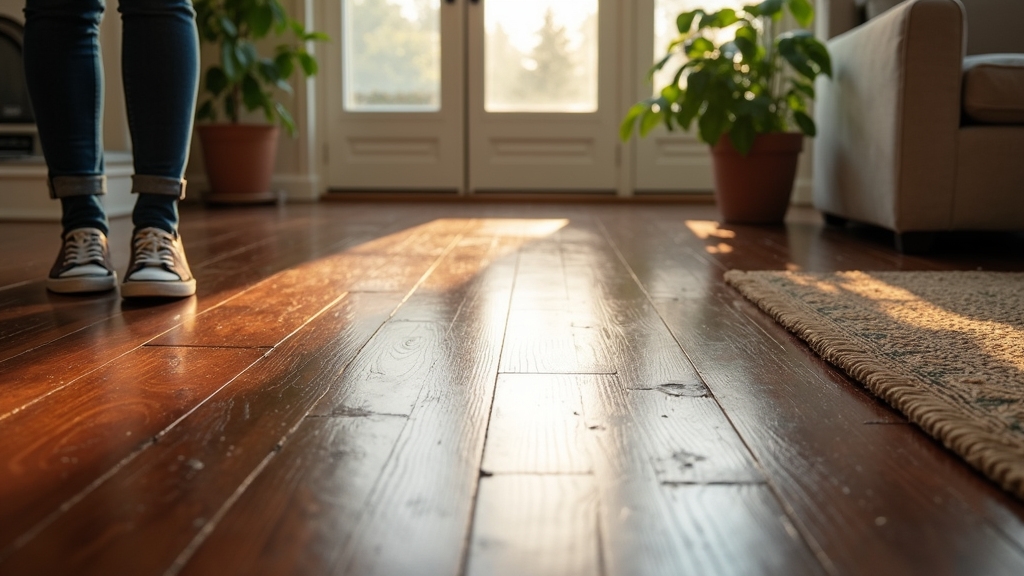
Beyond their visual appeal and design versatility, dark hardwood floors demand specific care to preserve their striking appearance. You’ll need to clean daily using microfiber mops or soft-brush vacuum attachments to prevent dust buildup, which shows readily on darker surfaces.
Immediately blot spills to avoid stains or warping, and steer clear of vacuums with beater bars to protect the finish. Use hardwood-specific, non-oil-based cleaners applied to tools—not directly on floors—to prevent residue.
Avoid wax or acrylic polishes, which can damage finishes. Place mats at entryways and felt pads under furniture to minimize scratches. Protect floors from direct sunlight to prevent fading.
Consistent maintenance including periodic finish reapplications and cautious steam mopping extends lifespan, especially in high-traffic or pet-friendly homes. This care preserves the rich, timeless aesthetic dark hardwood floors offer.
For best results, use a pH-neutral cleaner to avoid damage and maintain the finish’s durability.
Influence of Undertones and Finishes on Dark Wood Style
When choosing dark hardwood floors, you’ll want to think about how warm versus cool undertones impact your space’s mood and style. Warm undertones create a cozy, inviting atmosphere. Selecting finishes with low-VOC sealants ensures a healthier indoor environment while maintaining style.
Cool undertones lend a sleek, modern feel. Pairing these with matte or low-gloss finishes softens the overall look, aligning perfectly with current design trends that favor subtlety and natural texture. Additionally, selecting eco-friendly hardwood sourcing supports both style and sustainability, which is highly sought after in 2025.
Warm vs Cool Undertones
Because undertones considerably influence the mood and style of your dark hardwood floors, understanding the difference between warm and cool hues is essential for achieving the desired aesthetic.
Warm undertones, which include reddish, golden, or amber shades, infuse your space with richness and coziness, perfectly complementing neutral or light walls. Incorporating character grades with visible knots and grain variation can further enhance the warmth and individuality of floors with warm undertones.
Cool undertones, leaning toward black or deep gray, offer a sleek, modern vibe but can make rooms feel more compact and formal. As 2025 trends favor natural, earthy looks, warm undertones are gaining popularity over cool ones.
Consider these points:
- Warm undertones create inviting, intimate atmospheres ideal for rustic or farmhouse styles.
- Cool undertones enhance minimalist, industrial designs but require careful lighting balance.
- The choice impacts perceived space, light reflection, and overall room warmth.
Matte and Low-Gloss Finishes
Although dark hardwood floors naturally command attention with their rich hues, the choice of finish profoundly shapes their style and functionality.
Matte finishes reduce surface reflectivity, creating a subtle, understated look that softens dark woods’ visual weight while masking scratches and imperfections. Regular maintenance techniques like gentle sweeping help preserve matte finishes by preventing abrasive particles from dulling the wood.
You’ll find matte finishes ideal for achieving a contemporary, natural feel that mutes undertones and emphasizes texture. Low-gloss finishes offer a slight sheen, enhancing wood grain and bringing out subtle undertones without the glare of glossy surfaces.
This finish balances elegance with practical durability, making maintenance easier by hiding dust and minor abrasions. Additionally, the use of eco-friendly finishes like BONA Traffic HD® aligns with growing demand for sustainable and health-conscious flooring options.
In 2025, matte and low-gloss finishes lead trends by supporting minimalist, authentic aesthetics and ensuring dark hardwood floors remain sophisticated and functional in modern interior designs.
Regional Preferences and Market Demand for Dark Hardwood
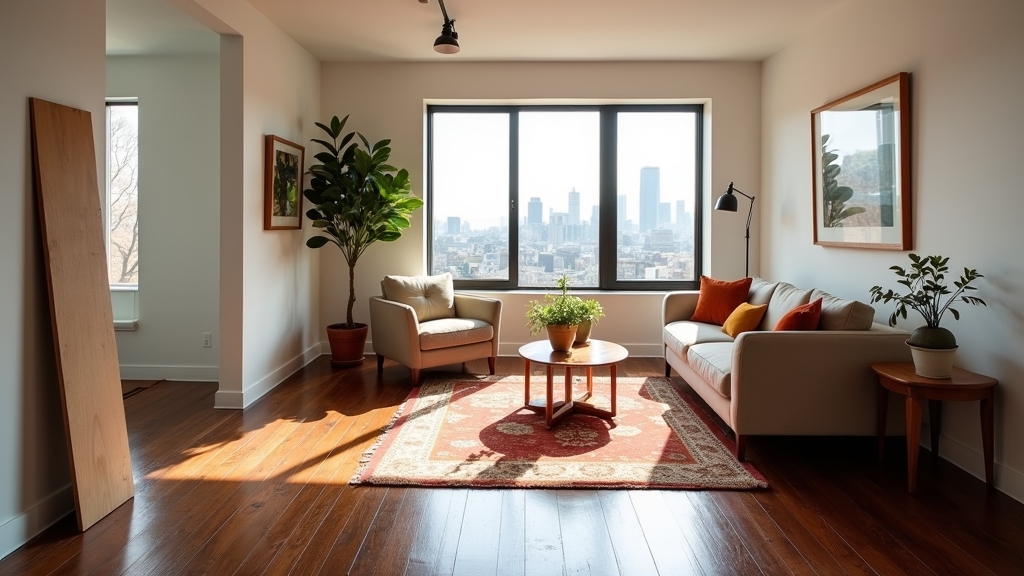
While dark hardwood floors continue to hold strong appeal in metropolitan and contemporary markets, regional preferences considerably shape their demand and style adoption. You’ll find that urban areas favor darker stains for their sophistication, while rural regions lean toward medium or natural wood tones.
In addition, the trend of dark hues in wood flooring emphasizes their role in creating a sophisticated, dramatic aesthetic that contrasts beautifully with lighter interiors. Proper finishing can include treatments to enhance durability and even make wood fire resistant.
In the U.S., engineered hardwood dominates, catering to durability and cost-effectiveness. Meanwhile, Europe’s emphasis on eco-friendly sourcing influences a shift toward lighter, natural finishes, though dark hardwoods remain prominent in luxury segments.
Asian markets show growing interest in exotic dark species, driven by expanding premium demand. Key regional insights include: North America’s 74% engineered hardwood sales support dark flooring in competitive markets. Southeast Asia leads hardwood supply, impacting availability and styles globally.
Styling Tips to Balance Dark Hardwood Floors With Interiors
Dark hardwood floors bring sophistication and depth to a room, but balancing their intensity with your interior design is key to creating a welcoming atmosphere. Pair them with light-colored walls, such as off-white, beige, or pastels, to create contrast and brighten the space. Incorporate soft linen furniture and light neutral tones to add warmth and prevent heaviness.
Use white or cream cabinetry for crisp borders, and consider light-colored rugs to soften and visually break up the floor. Leveraging natural, flowing forms in furniture and architectural elements can complement dark floors by adding softness and harmony to the space.
Leverage natural and warm-toned lighting to highlight rich wood grain and avoid cold, harsh illumination. Mix textures like metal, stone, and plush textiles to add visual interest and tactile contrast. Selecting warm or neutral stain undertones and thoughtful layout choices further guarantee your dark floors complement and elevate your interiors effortlessly.
Frequently Asked Questions
How Do Dark Hardwood Floors Affect Home Resale Value?
Dark hardwood floors can boost your home’s resale value by adding a sense of luxury and sophistication that many buyers seek. They tend to hold up well over time, maintaining their rich appearance, especially when paired with neutral, bright interiors.
While they may show dust more easily, proper maintenance minimizes this issue. Buyers often associate dark floors with elegance, helping your home stand out, attract higher offers, and sell faster in competitive markets.
Are Dark Hardwood Floors Suitable for Radiant Floor Heating?
You can bet your boots dark hardwood floors work well with radiant floor heating if you follow best practices. Engineered dark hardwood with tight grain patterns like oak offers excellent stability under heat.
Just make sure to acclimate the wood properly, keep surface temps below 80°F, and maintain humidity around 35%–55%. With careful installation and gradual heating, your floors will stay beautiful and durable while enjoying cozy warmth beneath your feet.
What Eco-Friendly Dark Hardwood Options Are Available?
You’ll find several eco-friendly dark hardwood options like FSC-certified species, including oak and Brazilian Cumaru, which offer rich, deep tones responsibly harvested. Reclaimed wood provides unique dark character while reducing waste.
Engineered hardwood with dark veneers minimizes solid wood use and meets emissions standards, enhancing sustainability.
Bamboo stained dark or cork with dark finishes serve as renewable alternatives, combining durability with eco-conscious style, letting you achieve a trendy dark floor without compromising environmental responsibility.
Can Dark Hardwood Floors Be Refinished Multiple Times?
Sure, you can keep sanding your dark hardwood floors until they’re practically strangers to their original selves—just don’t overdo it. Typically, solid hardwood lets you refinish 4 to 10 times, while engineered floors with thicker veneers allow 2 to 3.
Each sanding removes about 1mm, so keep thickness in mind. Plus, you can even switch up the stain color if you want a fresh vibe—dark to light or vice versa—if the wood’s up for it.
How Do Dark Hardwood Floors Perform in Humid Climates?
Dark hardwood floors can perform well in humid climates if you manage indoor humidity between 35-55%. You’ll want to use HVAC, dehumidifiers, and humidifiers seasonally to prevent warping, gaps, and cupping.
Proper acclimation before installation is vital to minimize moisture-related movement. Keep in mind, dark finishes show moisture damage more visibly, so sealing and maintenance are key to preserving their beauty and durability in humid environments.
Sophistication in Every Step: Deep Espresso & Black Hues
So, are dark hardwood floors really out of style? Not at all. You’ll find they still hold a strong place in modern design, especially when paired thoughtfully with lighter elements and the right finishes.
Their timeless appeal, practical benefits, and adaptability to current trends make them a smart choice.
With a little styling know-how, you can balance dark floors beautifully to create a space that feels both elegant and inviting. Why settle for less when you can have striking sophistication underfoot?

